The revolutionary activities & stories of female freedom fighters of Bengal are unknown to many. Men are typically the first to come to mind when discussing about Indian freedom fighters, such as Bhagat Singh.
Though there were other women activists who battled for the nation’s independence and played an equally essential role as men, we only know a handful of them. This article explores about strong Bengali women who led the Indian struggle for freedom/independence.
- 16 Female Freedom Fighters of Bengal
- 1. Bina Das
- 2. Kamala Das Gupta
- 3. Labanya Prabha Ghosh
- 4. Kalpana Datta
- 5. Suhasini Ganguly
- 6. Matangini Hazra
- 7. Sucheta Kripalani
- 8. Begum Rokeya Sakhawat Hossain
- 9. Pritilata Waddedar
- 10. Vina Mazumdar
- 11. Nanibala Devi
- 12. Basanti Devi
- 13. Suniti Choudhury
- 14. Sarala Devi Chaudhurani
- 15. Bela Mitra
- The Unsung Female Freedom Fighter of Bengal
- 16. Kalyani Das
- Summary
- FAQs on Female Freedom Fighters of Bengal
16 Female Freedom Fighters of Bengal
1. Bina Das

Born in Chittagong, then East Bengal, the daughter of a school teacher, she later migrated to South Calcutta where she grew up. Her father taught at Ravenshaw College in Cuttack, where the revolutionary Subhas Chandra Bose was a student. This led to the her involvement in the struggle for independence.
As a young revolutionary, Bina Das took up arms against the British Government. In a memoir, she describes her experience of shooting the British Governor of Bengal, Stanley Jackson. She was arrested afterwards, but the 5 bullets she had fired, had missed.
Despite this incident, she later beca me involved in the freedom struggle after her release from prison. She was inspired by her Gandhian father and was willing to risk her life for her country’s freedom. She was awarded the Padma Shri in 1960 and died on 26 December 1986. She inspired millions of young women to stand up for a cause.
You might also like to read about: Women Freedom Fighters of India.
2. Kamala Das Gupta
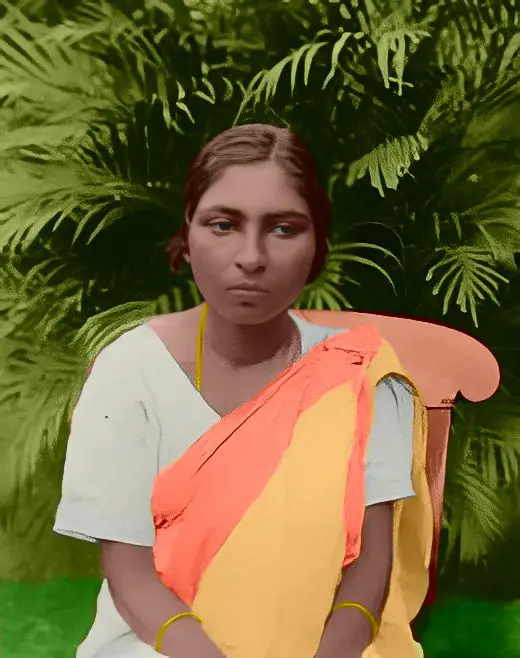
It was her dedication to the cause of freedom that made her a celebrated freedom fighter of India. Born in Bikrampur, Dhaka, she was inspired by the nationalist ideas she encountered in her studies at Bethune College. She took up the cause of India’s independence and became an active member of the freedom struggle.
She took up the job of a manager in a hostel for poor women. Under the guise of the hostel, she stored and supplied bombs and bomb-making material. She was arrested numerous times but was released on bail every time due to lack of evidence. She is the one who supplied Bina Das with the revolver that she used to shoot at Governor Stanley Jackson.
In 1936, she was held under house arrest. In 1938, she joined the Indian National Congress from the Jugantar Party, a secret revolutionary trend. She died at the age of 93.
Also read: Famous Slogans of Female Freedom Fighters.
3. Labanya Prabha Ghosh

Labanya Prabha Ghosh was a prominent freedom fighter of India. She spent her life fighting with nationalists for India’s freedom. Born in Purulia district, West Bengal, Ghosh was arrested and imprisoned several times during the Quit India Movement.
She became an active member of the Bhasha Andolan, which emerged after the Partition of India and the forceful imposition of Hindi on Bengali-speaking communities in Manbhum, which was cut off from Bengal.
She was homeschooled and taught by her father who was imprisoned by the Purulia district government for participating in the Non-Cooperation Movement in 1921. After completing her prison term, Ghosh became a prominent member of the West Bengal Legislative Assembly. Her son, Arun Chandra Ghosh, was also a freedom fighter.
Later in her life, she lived in poverty and suffered from failing eyesight, speech problems, and economic hardships. Sadly, she passed away on April 11, 2003.
If you’re liking the insightful information in this blog, our blog on First Women Freedom Fighter of India might also help in your preparation.
4. Kalpana Datta
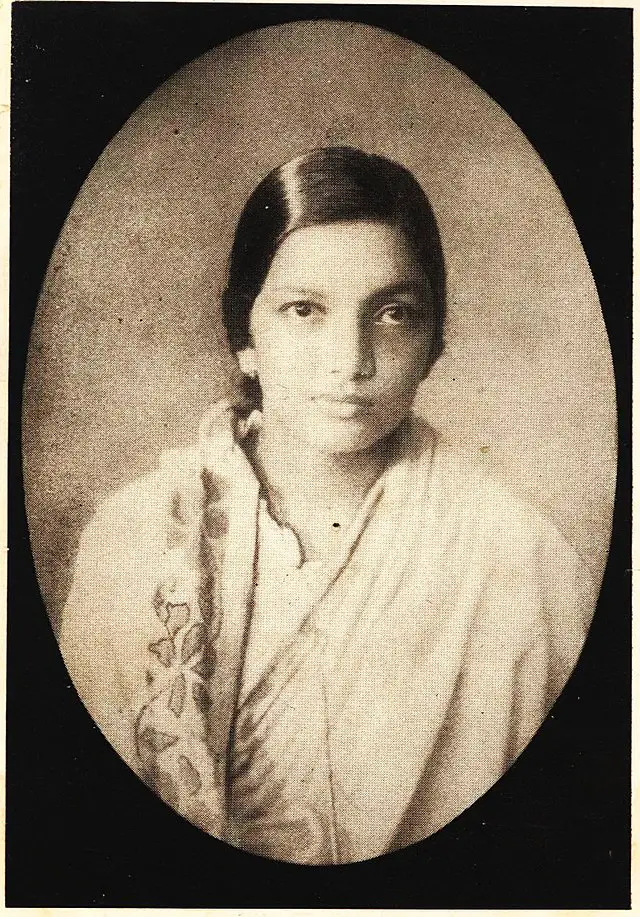
Kalpana Datta was born in Sripur in 1913. She completed her matriculation in 1929 & enrolled in Bethune College in Kolkata to study science. She then joined the Chhatri Sangha, which later became an important part of the Indian freedom movement. After graduating from Bethune, Datta married Puran Chand Joshi, the Communist party’s general secretary.
While growing up in a middle-class family, Kalpana was influenced by the example of Khudiram Bose and the courage of Kanailal Dutta. During her six-year imprisonment, she was exposed to communism. She read Marx and Lenin and critically analyzed political positions. Her efforts won her recognition & her memoir was published in 1945.
She went on to join the Communist Party of India and became a leader in the armed resistance movement. In 1946, she contested the Bengal Legislative Assembly elections. Her life story has inspired many women to follow the path of courage & perseverance. She died in 1995.
Also read: Female Freedom Fighters of Tamil Nadu.
5. Suhasini Ganguly

She was born on 3rd February 1909, to Abinashchandra Ganguly and Sarala Sundara Devi. She spent her youth in Khulna and Dhaka. During her teenage years, Ganguly developed sympathies for the revolutionaries. During her early twenties, she began working as a teacher at a deaf & dumb school in Calcutta.
Ganguly also later joined the Chhatri Sangha. She was an associate of Bina Das. She was detained from 1932 to 1938 & after her release, she joined the Communist Party. She was again arrested between 1942-1945 for providing shelter to Hemanta Tarafdar. Due to her activities affiliated with communism, she remained in jail even after India’s independence. She died following a road accident in 1965.
You might also like to read our article on Women Freedom Fighters of Karnataka.
6. Matangini Hazra

Matangini Hazra was an ardent follower of Mahatma Gandhi. In 1905, she became active in the Indian Independence Movement. She was inspired by Mahatma Gandhi, who had been imprisoned for his agitation against British rule. She also took part in the Civil Disobedience Movement, where she was arrested for breaking the Salt Act.
Her early life was a life of poverty. She was a child bride as she had got married to a rich widower named Trilochon Hazra at the age of 12. Although she lost her husband at a young age, Matangini dedicated her life to serving others. During the Quit India Movement in August 1942, she was arrested for disobeying British salt laws.
In the early 1900s, the Nationalist movement began to gain momentum. Mahatma Gandhi traveled extensively throughout the subcontinent to spread awareness of the freedom movement. Hazra was a staunch follower of Gandhi, earning her the nickname “Gandhi Buri.”
After her release from prison, she tirelessly nursed people who had contracted smallpox. She was severely injured by a police baton charge while attending the sub-divisional conference of the Indian National Congress. At 73 years of age, she led a crowd of 6 thousand people to take over the Tamluk police station and was shot dead by the British Police.
Read also: Female Freedom Fighters of Maharashtra.
7. Sucheta Kripalani

It’s difficult to imagine Indian history without the presence of the late Sucheta Kripalani. Born in Ambala, she grew up in a Bengali-Brahmo family. Although shy and reserved as a child, her steely will and exemplary leadership qualities were molded by her experiences growing up in patriotic India.
Her autobiography, An Unfinished Autobiography, provides a detailed account of the defining moments in her life. She studied at Punjab University and Indraprastha College and became a professor of Constitutional history at the Hindu University in Banaras. Her husband was the leader of the Indian National Congress.
After a brilliant educational career, Sucheta Kripalani married a leading member of the Indian National Congress. Although Mahatma Gandhi opposed their marriage, it was eventually accepted. She was active in the Quit India movement and during the riots around the Partition of India, she worked with Mahatma Gandhi.
She served as the first head of the Women’s department of Congress. She later went on to establish the All India Mahila Congress and worked closely with Mahatma Gandhi.
Despite challenges, Kripalani was one of the few women elected to the Constituent Assembly in 1946. This assembly consisted of 299 members, and Kripalani was one of only 15 women. Other prominent women in the assembly included Sarojini Naidu, Vijayalakshmi Pandit, and Ammu Saminathan.
She was also an MP for New Delhi and later became Minister of Labour, Community Development, and Industry in the state government of Uttar Pradesh. In 1963, Kripalani became India’s first female Chief Minister for the state of Uttar Pradesh.
Related Article: Female Freedom Fighters of Punjab.
8. Begum Rokeya Sakhawat Hossain

Begum Rokeya Sakhawat was an outspoken supporter of women’s education & a political activist. She helped start a high school for girls. She also wrote many novels and short stories. She was born on 9 December 1880 and died on 9 December 1932. Her birthdate is commemorated as “Begum Rokeya Day” in Bangladesh.
Born in Pairabondh, present-day Bangladesh, Rokeya’s family was progressive and educated. Her husband, Khan Bahadur Syed Sakhawat Hossain encouraged Rokeya to study and publish her writings in Indian periodicals. Unfortunately, he developed acute diabetes and died. But even after her husband’s death, Rokeya’s work continued to impact society.
As an activist, Begum Rokeya worked to establish an Islamic women’s association to promote the rights of Muslim women in India. The association held many conferences and debates about the status of women and promoted reforms.
She believed that the slow development of Muslims in British India was due to conservatism. She worked to correct this by organizing social reforms based on the teachings of Islam.
In addition to her social work and writing, Begum Rokeya was also a passionate Muslim feminist. She struggled with gender inequality and religious orthodoxy while living in an upper-class Bengali family. Her father was not willing to allow Rokeya to attend college and pursue her education. She did so on the sly and became a well-known writer of Bengali and English.
Also read our article on the freedom fighter Aruna Asaf Ali.
9. Pritilata Waddedar
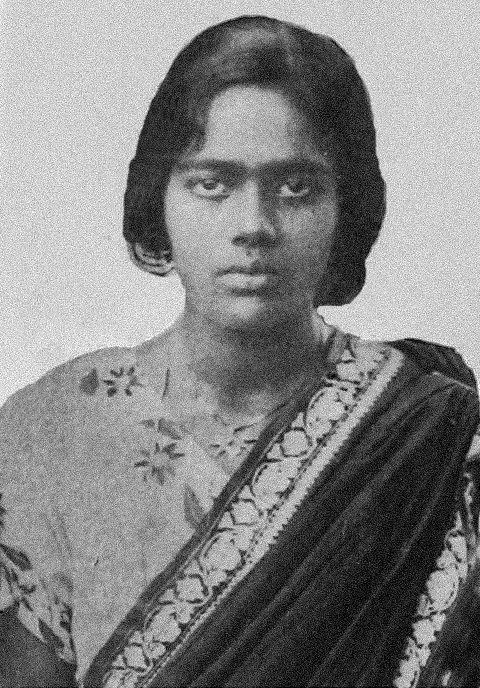
Pritilata Waddedar was a young woman when she became a freedom fighter in India. She studied philosophy at Bethune college in Calcutta and met the revolutionary leader Surya Sen, who was affectionately called Master Da.
Waddedar joined Surya Sen’s underground group. At first, Sen’s group members objected to her membership but changed their minds after she demonstrated her commitment to the cause of India’s freedom. Her dedication to the cause allowed her to carry out her assignments undetected.
She became a symbol of women revolutionaries and was honored with a posthumous graduation certificate in 2012.Her husband, Nirmal Sen, was killed in Dhalghat while evading arrest.
As a teenager, Pritilata was a bright student. Her father worked as a clerk in the municipal offices. Her father gave her an excellent education. He often told Pritilata that his hopes for her were entwined with hers. Pritilata was only 21 years old when she died. She was a young freedom fighter in the making and died a martyr.
You might also like to read about: Female Freedom Fighters of Goa.
10. Vina Mazumdar

Born in Kolkata, in 1927, Vina was the youngest child of a Bengali family. Her father was an engineer, and her uncle was the noted historian R.C. Majumdar. She attended St. John’s Diocesan Girls’ Higher Secondary School and later attended the Women’s College of the Banaras Hindu University and the Ashutosh College in Calcutta.
During her time in college, she became active in women’s empowerment and organized a trip for girl students to meet Mahatma Gandhi. She shepherded the landmark Report of the Committee on the Status of Women in India. But her vision was inclusive, and she drew men as students, collaborators, and mentors.
In a society that values equality, women are the most important part of any democracy, and Mazumdar believed this to be the most important part of human rights and social justice.
She was born into a Bengali-speaking family and attended prestigious colleges in Calcutta, Benares, and Oxford. She obtained her D.Phil. at Oxford University, and taught political science at Berhampur and Patna. She also became a member of the UGC Secretariat and a fellow of the Indian Institute of Advanced Studies in Shimla. She later went on to be a noted journalist and professor.
In addition to her activism, Mazumdar was a pioneer of women education in India. She was also one of the first women to combine academic scholarship with activism, leading to the formation of the Indian Association for Women’s Studies. In 1982, she became a founding member of the association, which now holds national conferences to promote Women’s Studies.
Expand your knowledge about the struggle for Indian Independence with our blog on Female Freedom Fighters of Telangana.
11. Nanibala Devi

Nanibala Devi was a prominent freedom fighter from Bengal. She was born in the family of Surya Kanta Banerjee of Howrah. She became acquainted with freedom fighters when she was in refuge with Amarendranath Chatterjee.
She used to smuggle letters to imprisoned freedom fighters. She also rented accommodations for freedom fighters. She was very low-key but once her cover was blown and she was caught in Peshawar. She caught cholera there and was subjected to inhuman torture by the British police.
Read also: South Indian Women Freedom Fighters.
12. Basanti Devi

One of the most influential freedom fighters in India is Basanti Devi. Born in Calcutta on 23rd March 1880, she was part of the Khilafat Movement and Civil disobedience campaign. She was also a member of the Nari Karma Mandira.
Her husband, Chittaranjan Das, died on 16 June 1925 and she later took over his weekly magazine, Bangalar Katha. She received the Padma Vibhushan award in 1973.
Following her husband’s death, she took part in many social movements. She attended the Nagpur session of the Indian National Congress. In 1925, she led a group of five women to sell khadi in the city. Basanti was warned by Subhash Chandra Bose not to sell khadi because it could lead to arrest. But this small group continued to grow and the movement gained momentum.
In 1921, she joined the Indian independence movement. She was influenced by Mahatma Gandhi and took part in the Non-Cooperation Movement. She was arrested several times for her activism and remained active in social issues after independence.
You might also like to read about: Women Freedom Fighters of Kerala.
13. Suniti Choudhury
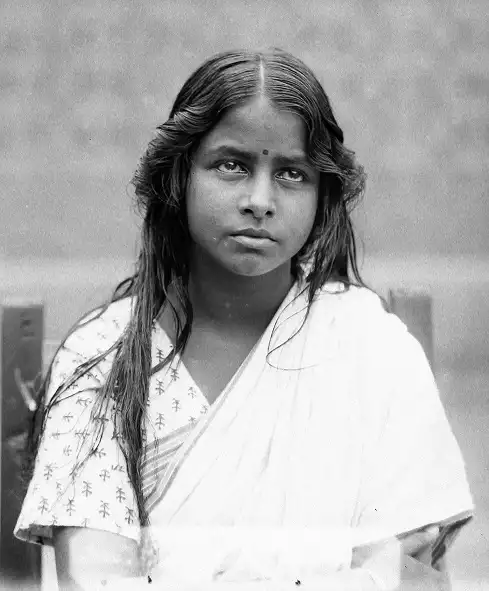
She was born on December 27, 1917, in the village of Borjhar in the Nagaon district of Assam. Suniti Choudhury was the daughter of renowned freedom fighter, Satish Chandra Choudhury, who was a close associate of Netaji Subhash Chandra Bose.
Suniti Choudhury actively participated in India’s struggle for independence from the British Empire. She joined the Indian National Congress and worked closely with leaders like Mahatma Gandhi, Jawaharlal Nehru, and Subhash Chandra Bose. She was also a member of the Indian National Army (INA) and served as a secretary to Captain Lakshmi Sahgal, who was the commander of the Rani of Jhansi Regiment.
Suniti Choudhury played a crucial role in organizing protests and agitations against the British Raj. She was actively involved in the Quit India Movement and was imprisoned several times by the British authorities for her participation in the freedom struggle.
After India gained independence in 1947, Suniti Choudhury continued to work for the welfare of society. She was actively involved in the relief and rehabilitation efforts during the Bengal Famine of 1943 and worked to promote education and healthcare in rural areas.
In recognition of her contributions to the nation, Suniti Choudhury was awarded the Padma Shri, one of India’s highest civilian honors, in 2002. She passed away on August 11, 2012, at the age of 94. Her legacy as a brave freedom fighter and a committed social worker continues to inspire generations of Indians.
Also read: Female Freedom Fighters of Uttarakhand.
14. Sarala Devi Chaudhurani
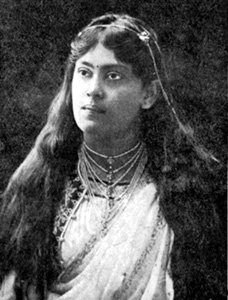
She was born on September 9, 1872, in Bhagalpur, Bihar. She came from a progressive family and was educated at home by her father, who was a scholar of Sanskrit and Persian. Sarala Devi Chaudhurani actively participated in India’s freedom struggle and played a significant role in the Indian National Congress.
She was a close associate of leaders like Mahatma Gandhi, Subhash Chandra Bose, and Rabindranath Tagore. She was an active participant in the Non-Cooperation Movement, the Civil Disobedience Movement, and the Quit India Movement.
Sarala Devi Chaudhurani was also a strong advocate of women’s rights and worked to promote education and social reform for women. She founded the Bharat Stree Mahamandal in 1910, an organization dedicated to women’s empowerment and the promotion of women’s rights.
Sarala Devi Chaudhurani was an accomplished writer and scholar. She wrote extensively on women’s issues and published several books, including ‘Sita Devi the Queen of Oudh’ and ‘A Nation in Making.’
In recognition of her contributions to the nation, Sarala Devi Chaudhurani was awarded the Padma Bhushan, one of India’s highest civilian honors, in 1955. She passed away on August 18, 1945, at the age of 73.
Also read our article on Women Freedom Fighters of Odisha.
15. Bela Mitra

Bela Mitra was a prominent social reformer and feminist from Bengal, India. She was born on December 1, 1892, in Kolkata (formerly Calcutta), and was educated at the Bethune School, which was one of the first schools for girls in India.
Bela Mitra played a significant role in the Indian women’s movement and worked tirelessly to improve the status of women in Indian society. She was a member of the All India Women’s Conference and was actively involved in the Indian National Congress. She also played a crucial role in the women’s suffrage movement and worked to secure the right to vote for Indian women.
Bela Mitra was a prolific writer and published several articles and books on women’s issues. Her writings focused on topics such as women’s education, women’s health, and women’s rights. Her most famous book is ‘Hawa Badal’ (Change of Winds), which is an autobiographical account of her life and her experiences as a feminist and social reformer.
Bela Mitra’s contributions to the Indian women’s movement were widely recognized, and she was awarded the Padma Bhushan, one of India’s highest civilian honors, in 1968. She passed away on July 24, 1972, at the age of 79.
Her work played a crucial role in improving the status of women in Indian society and paved the way for future generations of women to actively participate in public life and contribute to the development of the nation.
Read also:
The Unsung Female Freedom Fighter of Bengal
Above-mentioned were some of the well known female freedom fighters of Bengal. In this section, we’ll read about the unsung female freedom fighter of Bengal.
16. Kalyani Das
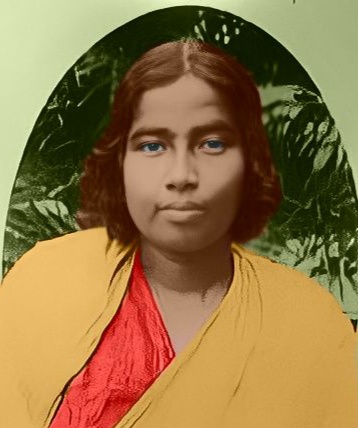
Kalyani was born in 1907 and was a member of the Chhatri Sangha, an organization of women in Kolkata. She was the sister of Bina Das. She joined the Bengal Volunteers Corps during 1928-29. Kalyani Das became the Vice President of the All Bengal Students’ Association.
On September 5, 1933, she was arrested for participating in the Civil Disobedience Movement. She was later transferred to the Hijli and Midnapore jails. She was released on unconditional parole in April 1938. She continued to participate in the Quit India Movement, organizing various protests and strikes.
You might also like to read about: Unknown Female Freedom Fighters of India.
Summary
Bengal was home to several female freedom fighters who played a significant role in India’s struggle for independence from British rule. These female freedom fighters defied societal norms and played a crucial role in the fight for India’s freedom.
Their legacy continues to inspire generations of Indians, and their contributions to the nation will always be remembered.
FAQs on Female Freedom Fighters of Bengal
Who is called the “Fire Girl of Bengal”?
Bina Das was known as the Fire Girl of Bengal. At the age of around 21 years, Bina Das tried to assassinate Governor of Bengal Stanley Jackson.
Who is called “Gandhi Buri”?
Matangini Hazra was affectionately referred to as Gandhi Buri, which is Bangla meaning old lady Gandhi. This was because she was a staunch follower of Mahatma Gandhi.
Who is called Bengal’s “Jhansi Rani”?
Bela Mitra is called Bengal’s “Jhansi rani” as she had joined the Indian National Army and worked in Jhansi Rani Brigade. She gave shelter to the revolutionaries who came outside of India, operated the transmitter of Azad Hind Radio, and sent information to Singapore from Kolkata from January to October in 1944. In 1947 Smt. Mitra formed a social organization, Jhansi Rani Relief Team.
What were some of the challenges faced by female freedom fighters in Bengal?
Female freedom fighters in Bengal faced several challenges, including societal restrictions on women’s participation in public life, limited access to education and resources, and the threat of imprisonment or violence by the British authorities.
How are female freedom fighters from Bengal celebrated and remembered today?
Female freedom fighters from Bengal are celebrated and remembered through various means, including the naming of streets, institutions, and buildings after them, the publication of books and articles on their lives and contributions, and the celebration of their birthdays and anniversaries. They continue to inspire generations of Indians to stand up for their rights and fight for justice and equality.






